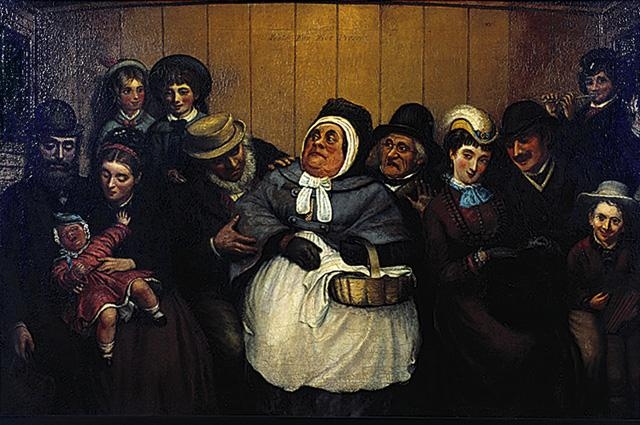In his popular television programme, Great British Railway Journeys, Michael Portillo uses Bradshaw’s Tourist Handbook to navigate the British rail network. However, Bradshaw was most famous for his monthly timetable, known as Bradshaw’s Railway Guide. For 19th-century passengers, the complexity of Bradshaw’s Guide could be daunting. The small text and the extensive volume of information made journey planning confusing. In the Victorian era, Bradshaw’s Guide became a generic name for a timetable, and an easy target for parody.
One of my favourite Bradshaw stories appears in Punch magazine in 1865. It suggests a Victorian melodrama centred around Bradshaw’s Guide. Entitled ‘Bradshaw, A Mystery’, it tells the story of two lovers as they attempt to meet each other by train by using the guide.
The main character, Orlando, decides to visit his love, Leonora, in Liverpool, but his journey is complicated by the incomprehensible nature of Bradshaw. Meanwhile, Leonora decides to search for Orlando by travelling to his home in London. By sheer good fortune, they meet coincidently in Chester, and Orlando promises in future to be Leonora’s only guide. The play, Punch states, ends with the confession: ‘And let us hope, nor you nor I again may be attacked with Bradshaw on the brain’.

Another favourite is ‘A Narrative of Extraordinary Suffering’, an 1851 short story by Dickens, found in the periodical Household Words. It tells the tale of Mr. Lost, who comes to mental ruin attempting to follow the instructions in his Bradshaw’s Guide.
Mr. Lost needs to go to London to do business. Lost purchases Bradshaw’s Guide and tries to clarify how to get to London from his hometown of Ware. However, he can only find ‘Ware Tu…p. 6’. Confused and realizing that there is no page 6, Mr. Lost goes to London by road rather than rail. After completing his business in London, he then attempts to navigate his way back home on the North-Western Railway.

With Bradshaw still his guide, Mr. Lost makes numerous tries to return to Ware but ends up travelling all over the United Kingdom instead. He even travels to France, yet he never finds his destination. His life now in ruins, Mr. Lost returns to the Euston Hotel where Mrs. Lost arrives in London to retrieve him. She finds her husband now quite incoherent, muttering one word – Bradshaw.
Mr. Lost’s difficulties in navigating Bradshaw’s Guide, his troubles attempting to get home in a timely fashion and the physical and emotional trauma elicited from his railway travel were common in railway stories and in public discussions of railways.
‘Letters to the Editor’ in The Times were peppered with complaints about difficult journeys from passengers who felt that they were unnecessarily stopped at stations, that changes to the schedule were not made clear at the onset of their journeys and that they were late returning home due to difficulties on the line. Both stories provide an exaggerated and comic account of the real stresses of train travel.
